You’ve probably experienced that moment when you’re carrying groceries in the dark, fumbling for light switches while trying not to drop anything. Motion lights eliminate this frustration by automatically detecting your presence and illuminating your path before you even realize you need it. But their impact on home automation goes far beyond simple convenience – they’re quietly revolutionizing how your entire smart home system responds to your daily habits and creates an environment that anticipates your needs.
Understanding Motion Light Technology in Smart Home Systems
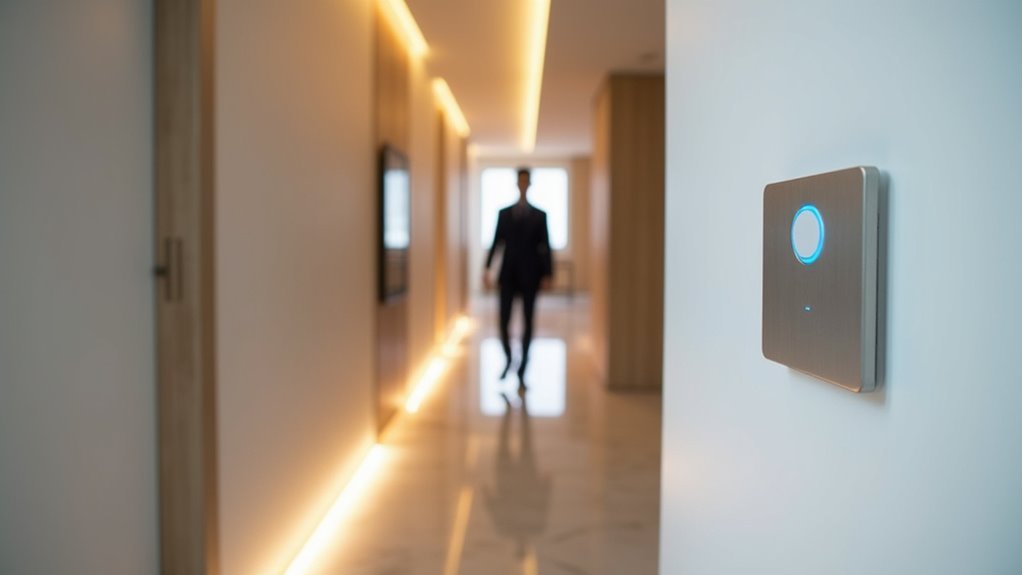
While traditional lighting systems require manual operation, motion lights automatically detect movement through advanced sensor technology and illuminate spaces without any input from you.
These sophisticated systems rely on motion sensors like Passive Infrared (PIR) and microwave sensors to identify your presence and respond instantly.
Advanced PIR and microwave sensors work together to create instant detection systems that respond seamlessly to human movement.
You’ll find that smart lighting integration transforms your home’s functionality markedly. Through smartphone apps, you can customize detection sensitivity, adjust brightness levels, and set specific activation schedules that match your lifestyle.
This intelligent automation doesn’t just provide convenience—it delivers substantial energy efficiency benefits by ensuring lights operate only when needed.
Strategic placement in high-traffic areas maximizes detection effectiveness while minimizing unnecessary activation, creating a seamless automated lighting experience throughout your home.
Enhanced Security Through Automated Motion Detection
Beyond convenience and energy consumption, motion lights serve as your home’s frontline defense against security threats. Motion sensor lighting transforms your property into an intelligent security system that responds instantly to unauthorized movement. When intruders approach, automated illumination creates an immediate deterrent effect while simultaneously alerting you through smartphone notifications.
| Security Feature | Immediate Benefit | Long-term Impact |
|---|---|---|
| Real-time alerts | Instant notification | Continuous monitoring |
| Automatic illumination | Deters intruders | Reduces break-ins |
| Smart integration | Remote monitoring | Enhanced peace of mind |
| Visibility improvement | Accident prevention | Safer pathways |
| Unauthorized entry detection | Immediate response | Extensive Home Security |
This technology provides continuous surveillance without requiring constant attention, allowing you to monitor your property remotely while maintaining ideal security coverage around key areas like entryways and driveways.
Energy Efficiency and Cost Reduction Benefits
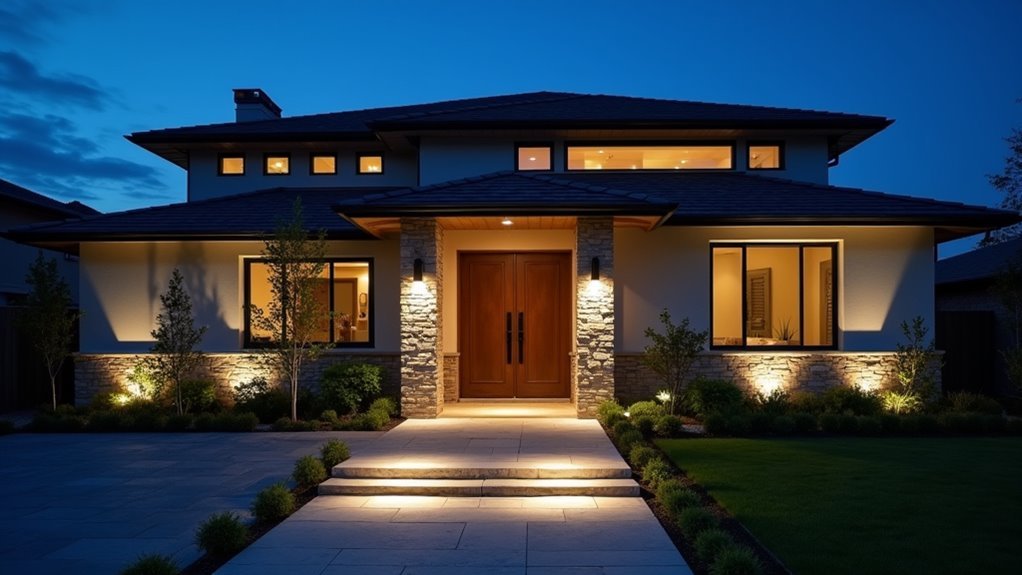
As energy costs continue to rise, motion sensor lights offer homeowners a practical solution that delivers immediate financial returns while supporting environmental sustainability goals.
You’ll achieve up to 30% energy savings compared to traditional lighting systems by automatically shutting off lights when spaces aren’t occupied. This translates to approximately $100 in annual cost savings when you install motion sensors in high-traffic areas like hallways, bathrooms, and entryways.
Your energy usage becomes considerably more efficient as lights only activate when movement’s detected, reducing unnecessary electricity consumption.
Motion-activated lighting eliminates wasteful energy consumption by operating only when occupancy is detected, dramatically improving household efficiency.
Smart home integration amplifies these benefits by allowing programmable settings that adapt to your occupancy patterns. This optimization minimizes your carbon footprint while maximizing energy efficiency, making motion sensors a financially sound investment that pays dividends through reduced utility bills.
Seamless Integration With Existing Home Automation Platforms
When you integrate motion lights with your existing home automation platform, you’ll create a unified smart home ecosystem that transforms how you control and monitor your living space. Your motion sensors become powerful triggers that activate multiple devices simultaneously, enhancing both security and convenience.
Popular platforms like Google Home, Amazon Alexa, and Apple HomeKit support motion light integration, enabling voice control and automated routines. You’ll receive real-time smartphone notifications when motion’s detected, while your home automation system can trigger cameras, lock doors, or adjust thermostats automatically.
| Integration Feature | Smart Home Benefit |
|---|---|
| Voice Control | Hands-free lighting management |
| Automated Routines | Synchronized device responses |
| Real-time Alerts | Enhanced security monitoring |
| Custom Scenarios | Personalized user experiences |
This seamless connectivity lets you customize settings that adapt to your daily routines.
Customizable Motion Sensitivity and Detection Zones
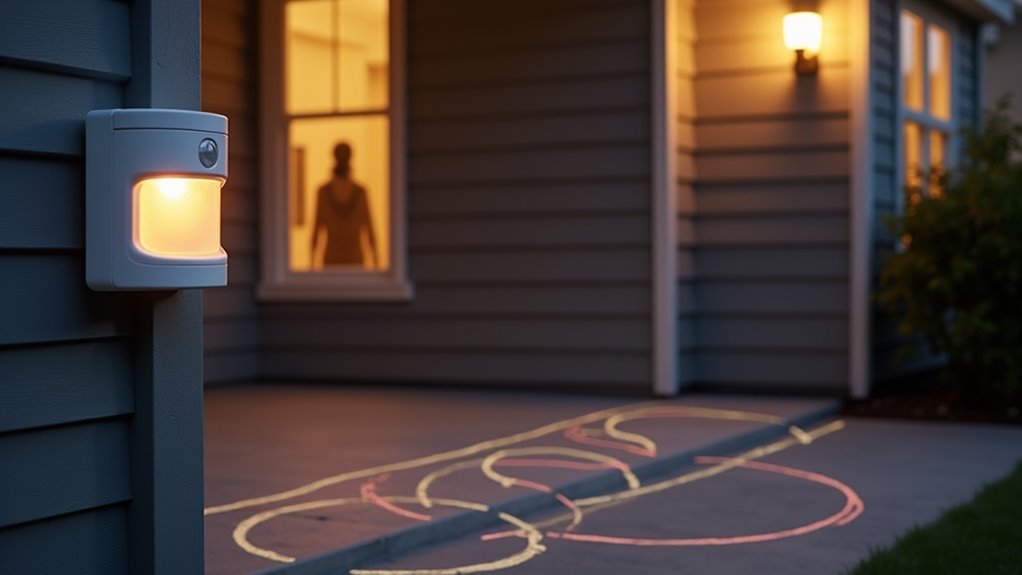
Fine-tuning your motion sensor’s detection capabilities guarantees your smart lighting system responds precisely to your household’s unique patterns and needs.
Customizable motion sensitivity settings let you adjust detection ranges, preventing false triggers from pets or passing vehicles while ensuring lights activate when you actually need them. You can configure detection zones to cover high-traffic areas like entryways and walkways while excluding less frequented spaces, maximizing both convenience and energy savings.
Advanced models offer adjustable timer settings, controlling how quickly lights respond and how long they remain illuminated.
Dual-technology sensors combining infrared and microwave detection provide superior accuracy, virtually eliminating false alarms.
Smart home integration enables dynamic customization, allowing you to modify sensitivity and zones based on daily routines or specific scenarios.
Smart Lighting Scenes Triggered by Movement Patterns
You can elevate your motion lighting system by implementing pattern recognition technology that learns your daily routines and automatically triggers customized scene automation.
When you repeatedly move through specific areas at certain times, your smart lights’ll adapt their responses to match your activities and preferences.
This adaptive lighting creates seamless changes between different illumination modes, whether you’re cooking breakfast, watching TV, or winding down for bed.
Pattern Recognition Technology
As your home learns your daily routines, pattern recognition technology transforms ordinary motion sensors into intelligent lighting orchestrators that anticipate your needs.
This advanced system analyzes your movement patterns, identifying walking paths and timing to create personalized experiences that enhance comfort while maximizing energy efficiency.
Your smart lighting system doesn’t just react—it predicts. By recognizing habitual behaviors, it automatically adjusts brightness and color temperature based on your preferences and activities.
Key capabilities of pattern recognition technology:
- Activity Detection – Differentiates between reading, entertaining, or relaxing movements to trigger appropriate lighting scenes.
- Behavioral Learning – Analyzes time-of-day patterns to anticipate your lighting needs before you enter rooms.
- Occupancy Optimization – Tracks actual usage trends to eliminate unnecessary energy consumption.
- Personalized Automation – Creates tailored ambiance that adapts to your unique lifestyle patterns.
Customized Scene Automation
When motion sensors detect your presence, customized scene automation transforms your entire environment by instantly triggering pre-configured lighting scenes that match your specific activities and preferences.
You’ll create tailored experiences like soft night lights for bathroom visits or bright task lighting for kitchen work. Your smart lighting system adjusts brightness and color temperature in real-time, matching the time of day and your personal preferences.
This automation greatly improves energy efficiency by activating lights only when you’re actually present, eliminating wasteful consumption.
You can expand these scenes beyond lighting by incorporating thermostats and music systems, creating a cohesive automated experience. Your movement patterns become the catalyst for a welcoming atmosphere that adapts seamlessly to your daily routines and lifestyle needs.
Adaptive Lighting Responses
Motion sensors revolutionize home lighting by creating adaptive responses that intelligently adjust brightness and color temperature based on your movement patterns and the time of day.
These sophisticated systems analyze your daily routines to deliver personalized lighting experiences that enhance comfort and efficiency throughout your home.
Your smart lighting automatically responds to detected movement with these key capabilities:
- Scene Programming – Configure specific lighting settings that activate when motion’s detected, like brightening entryways during evening hours.
- Predictive Intelligence – Systems learn your habits and pre-emptively adjust lighting before you enter rooms.
- Ecosystem Integration – Motion sensors communicate with other smart devices to trigger complex lighting sequences.
- Mobile Customization – Control how your adaptive lighting responses react to movement through user-friendly smartphone apps.
Remote Control and Monitoring Capabilities
Modern smart motion lights transform how you’ll interact with your home’s lighting system through thorough remote control and monitoring features. You’ll manage these smart devices from anywhere using smartphone apps, receiving real-time notifications when movement’s detected. This monitoring capability keeps you informed about activity around your property, even when you’re away.
| Feature | Benefit |
|---|---|
| Real-time notifications | Instant alerts of detected movement |
| Customizable settings | Adjust brightness and activation times |
| Integration compatibility | Works with home automation platforms |
You can customize brightness levels, activation times, and sensitivity settings remotely, tailoring operation to your household’s unique dynamics. The integration with home automation platforms allows your motion lights to work seamlessly with other smart devices, creating a thorough control system that adapts to your schedule and preferences effortlessly.
Indoor Vs Outdoor Motion Light Applications
While motion lights share core functionality, their indoor and outdoor applications serve distinctly different purposes in your smart home ecosystem.
Indoor motion sensor lights prioritize convenience and energy efficiency by automatically illuminating hallways, bathrooms, and living spaces when you enter. They integrate seamlessly with smart home systems to optimize occupancy-based lighting.
Outdoor motion lights focus primarily on security, deterring intruders through immediate illumination of driveways, entryways, and gardens while alerting you to suspicious activity.
- Weather resistance – Outdoor units withstand harsh conditions while indoor models prioritize aesthetics
- Detection range – Outdoor sensors cover broader areas for perimeter security
- Integration capabilities – Indoor lights connect deeper with smart home automation systems
- Customization options – Both offer adjustable sensitivity and timers for personalized functionality
Safety Improvements for Nighttime Navigation
You’ll find that motion lights transform your home’s nighttime safety by automatically illuminating pathways the moment you step into dark areas.
These smart lighting systems instantly activate when they detect your movement, ensuring you’re never left fumbling through hallways, staircases, or entryways in complete darkness.
This immediate illumination greatly reduces your risk of trips, falls, and other accidents that commonly occur during nighttime navigation.
Automatic Pathway Illumination
When darkness falls across your property, motion sensor lights transform dangerous navigation hazards into safely illuminated pathways. These intelligent lighting solutions automatically detect movement and provide instant visibility where you need it most. Your driveways, walkways, and entrances become secure zones that respond intelligently to your presence.
Strategic motion lighting offers significant security benefits while preventing accidents:
- Immediate illumination eliminates blind spots and tripping hazards the moment you step outside.
- Enhanced visibility helps you identify obstacles, uneven surfaces, and potential dangers before they cause injury.
- Deterrent effect discourages intruders who rely on poorly lit areas to approach undetected.
- Customizable sensitivity allows you to adjust detection ranges and duration settings through home automation integration.
Studies demonstrate that well-lit pathways reduce accident likelihood by up to 50%, making motion sensors essential for thorough home safety.
Accident Prevention Features
Every year, thousands of home accidents occur simply because residents can’t see potential hazards in darkened hallways, staircases, and entryways. Motion sensors revolutionize accident prevention by automatically illuminating these dangerous areas before you even reach them.
This proactive lighting approach reduces trips and falls by up to 50%, especially benefiting elderly individuals and those with mobility challenges.
You’ll notice motion lights activate instantly when detecting movement, eliminating the fumbling for light switches that often leads to accidents. High-traffic zones like staircases become considerably safer with immediate illumination.
Smart home systems enhance this protection by allowing you to customize lighting settings based on your specific needs and preferences, ensuring peak visibility throughout your nighttime navigation routes.
Motion Light Installation and Setup Process
Before touching any wires, shut off the power to your existing light fixture at the circuit breaker to prevent electrical shock during installation.
Motion light installation requires strategic planning to maximize your smart lights’ effectiveness throughout your home.
- Choose ideal locations – Position motion lights at entry points, hallways, and outdoor pathways where foot traffic’s heaviest for extensive coverage.
- Follow manufacturer guidelines – Wire and mount your fixture according to specifications, ensuring unobstructed views so sensors can detect movement accurately.
- Customize sensitivity settings – Adjust detection range and timer duration to minimize false triggers while accommodating your family’s daily patterns.
- Test functionality thoroughly – Restore power and walk through the detection zone to verify your motion lights activate properly within the designated range.
Troubleshooting Common Motion Sensor Issues
When your motion sensor lights act up, you’ll typically encounter three main problems that can disrupt your home automation system.
False triggers from pets, cars, or lighting changes often stem from overly sensitive settings that need fine-tuning.
Poor placement or incorrect range settings can also cause your sensors to miss important movement or stay on constantly.
False Trigger Prevention
Although motion sensors offer incredible convenience for home automation, false triggers can quickly turn this smart technology into a source of frustration.
When your security system constantly activates from pets or passing cars, you’ll need strategic solutions to restore reliable performance.
Here are four essential methods to prevent false triggers:
- Adjust sensitivity settings – Fine-tune your sensors to ignore small movements like pets while maintaining detection of genuine security threats.
- Optimize positioning – Mount sensors at proper heights and angles, ensuring clear sight lines away from trees or furniture obstructions.
- Upgrade to dual-technology sensors – Combine infrared and microwave detection for enhanced accuracy requiring dual confirmation before activation.
- Maintain clean lenses – Regular cleaning prevents dirt buildup that causes erratic behavior and unnecessary activations.
Sensitivity Adjustment Methods
Since most motion sensors include multiple sensitivity levels, mastering these adjustments will solve the majority of false trigger problems you’re experiencing.
You’ll find sensitivity settings in your sensor’s configuration menu or physical controls. Start by lowering sensitivity if you’re getting frequent false triggers from pets or vehicles. This prevents unnecessary energy waste from smart lights activating constantly.
Test different levels systematically. Walk through detection zones at various speeds and distances to identify ideal settings. You should recalibrate after installation and seasonally, as environmental changes affect performance.
Higher sensitivity works for large spaces, while lower settings suit areas with regular non-human movement.
Document your final settings for each sensor location to maintain consistency and troubleshoot future issues effectively.
Placement and Range Issues
Poor sensor placement creates more detection problems than faulty hardware, so you’ll need to evaluate your mounting locations before assuming equipment failure.
Strategic positioning directly impacts your motion light system’s reliability and performance.
Your sensors require specific environmental conditions to function at their best:
- Mount at 6-8 feet height – This elevation provides maximum detection range coverage while avoiding ground-level interference from pets and debris.
- Maintain 15-30 foot detection range – Assess your space’s dimensions and adjust placement accordingly to achieve complete coverage without gaps.
- Avoid heat sources – Keep sensors away from radiators, vents, and direct sunlight to prevent false triggers from temperature fluctuations.
- Clear obstruction paths – Remove furniture, decorations, or plants that block the sensor’s line of sight and compromise movement detection accuracy.
Future Innovations in Motion-Activated Lighting Systems
As artificial intelligence continues to reshape smart home technology, motion-activated lighting systems will soon offer unprecedented levels of personalization and efficiency. Your smart lights will learn your daily routines and predict when you’ll need illumination before you even enter a room. Advanced dual-technology sensors work by combining infrared and microwave detection for superior accuracy across diverse environments.
| Innovation Area | Technology | Benefit |
|---|---|---|
| AI Learning | Pattern Recognition | Predictive lighting based on habits |
| Smart Integration | Device Communication | Coordinated home automation |
| Detection Precision | Dual-Technology Sensors | Enhanced accuracy in all conditions |
You’ll control everything through intuitive mobile apps, customizing settings for specific activities or times. These energy-efficient LED systems will seamlessly integrate with security cameras and thermostats, creating truly intelligent automated environments.
Frequently Asked Questions
What Are the Advantages of Motion Sensor Lights?
You’ll enjoy enhanced security as motion lights deter intruders, save energy by activating only when needed, provide hands-free convenience, integrate with smart systems, and offer real-time monitoring for peace of mind.
What Are the Benefits of Motion Detectors?
Motion detectors boost your home security by alerting you to intruders, save energy by controlling lights automatically, provide hands-free convenience, and integrate with smart devices for extensive automation.
What Are the Advantages of Motion Sensor Light Switch?
You’ll enjoy automatic lighting that saves energy by turning off when rooms are empty. They enhance security by illuminating spaces when movement’s detected and improve accessibility for hands-free operation throughout your home.
How Do Motion Sensor Lights Help the Environment?
You’ll reduce your carbon footprint by using motion sensor lights that consume 30% less electricity than traditional lighting. They minimize energy waste in unoccupied spaces, lowering greenhouse gas emissions from electricity production.

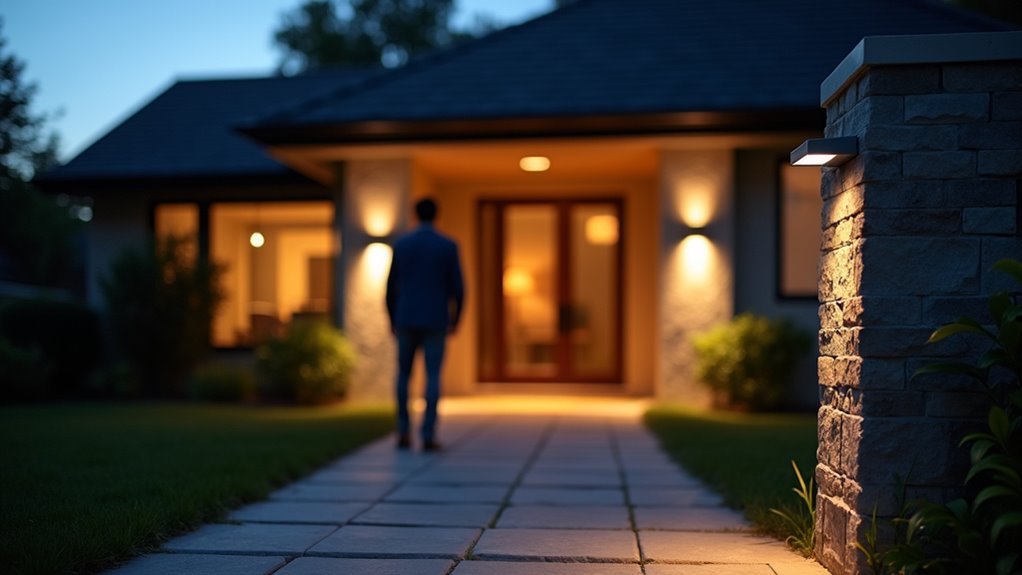
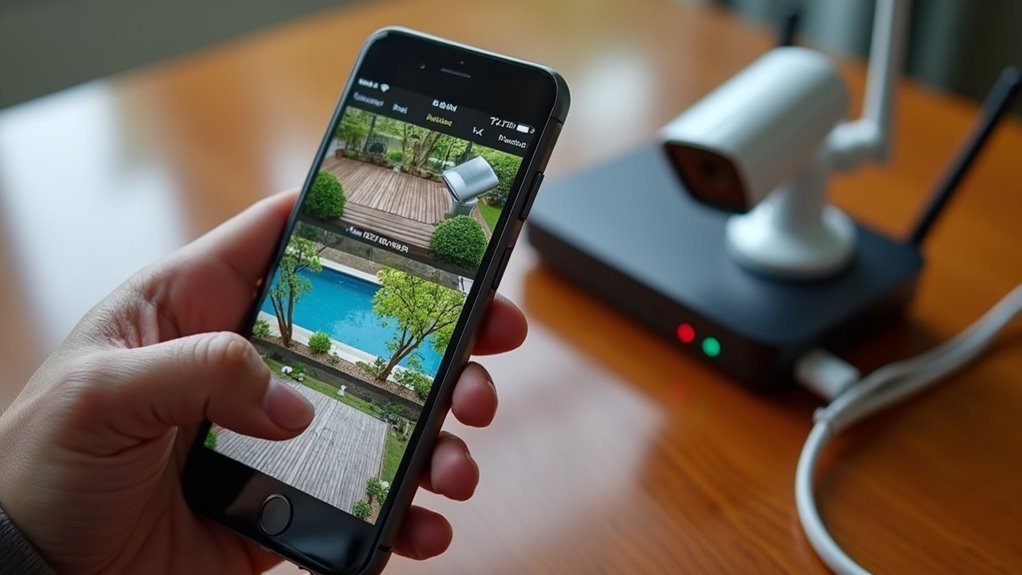
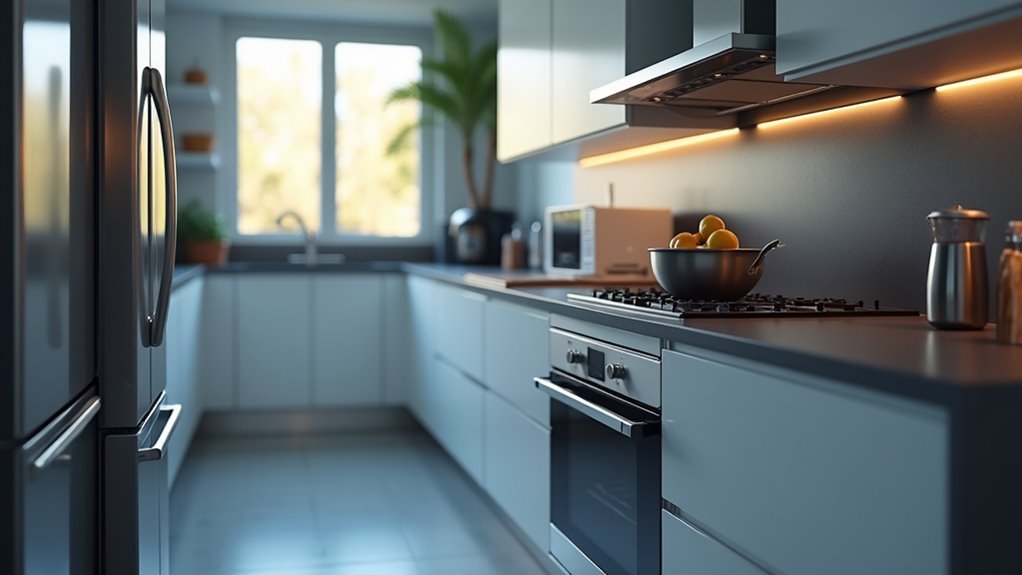
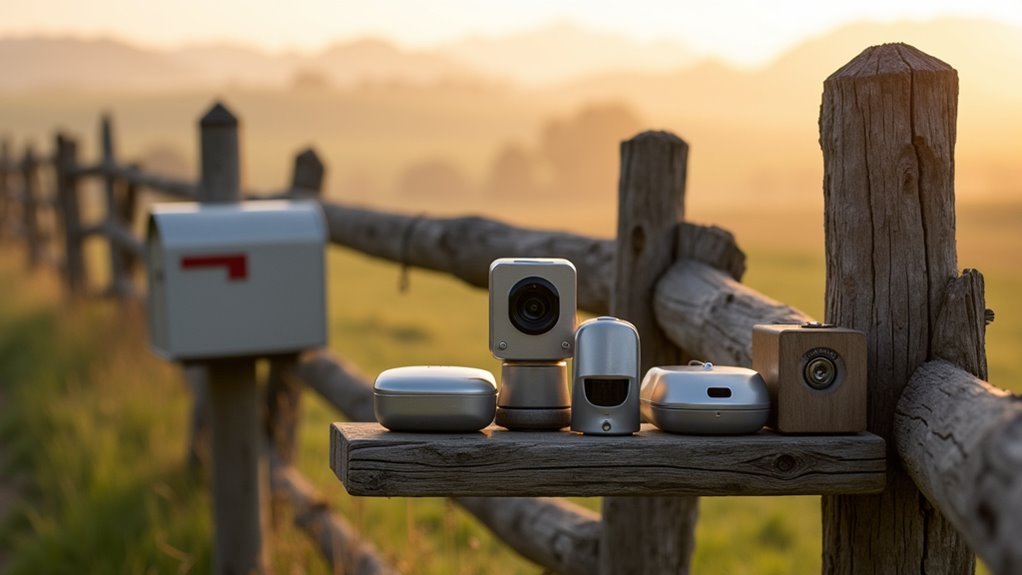
Leave a Reply